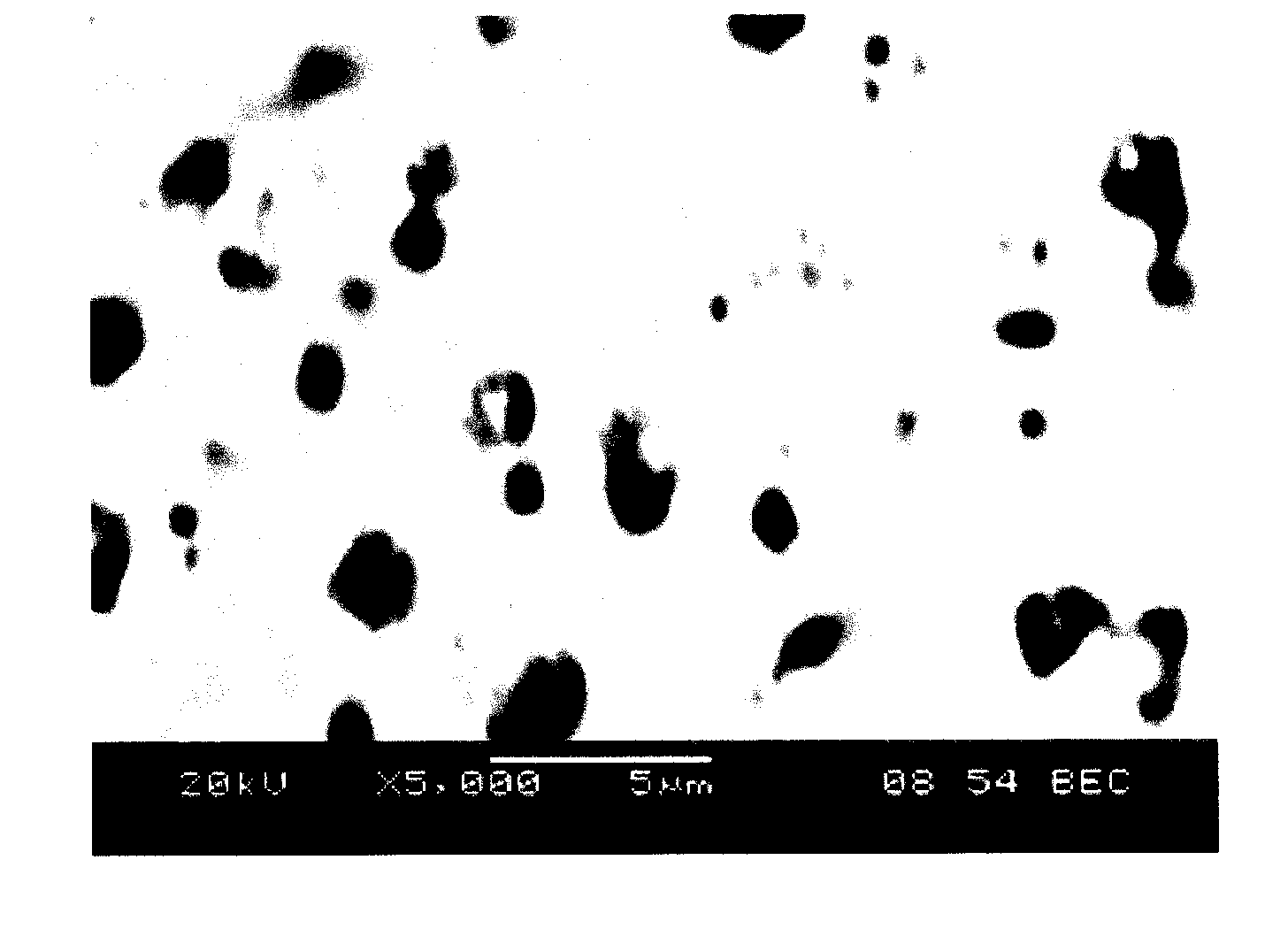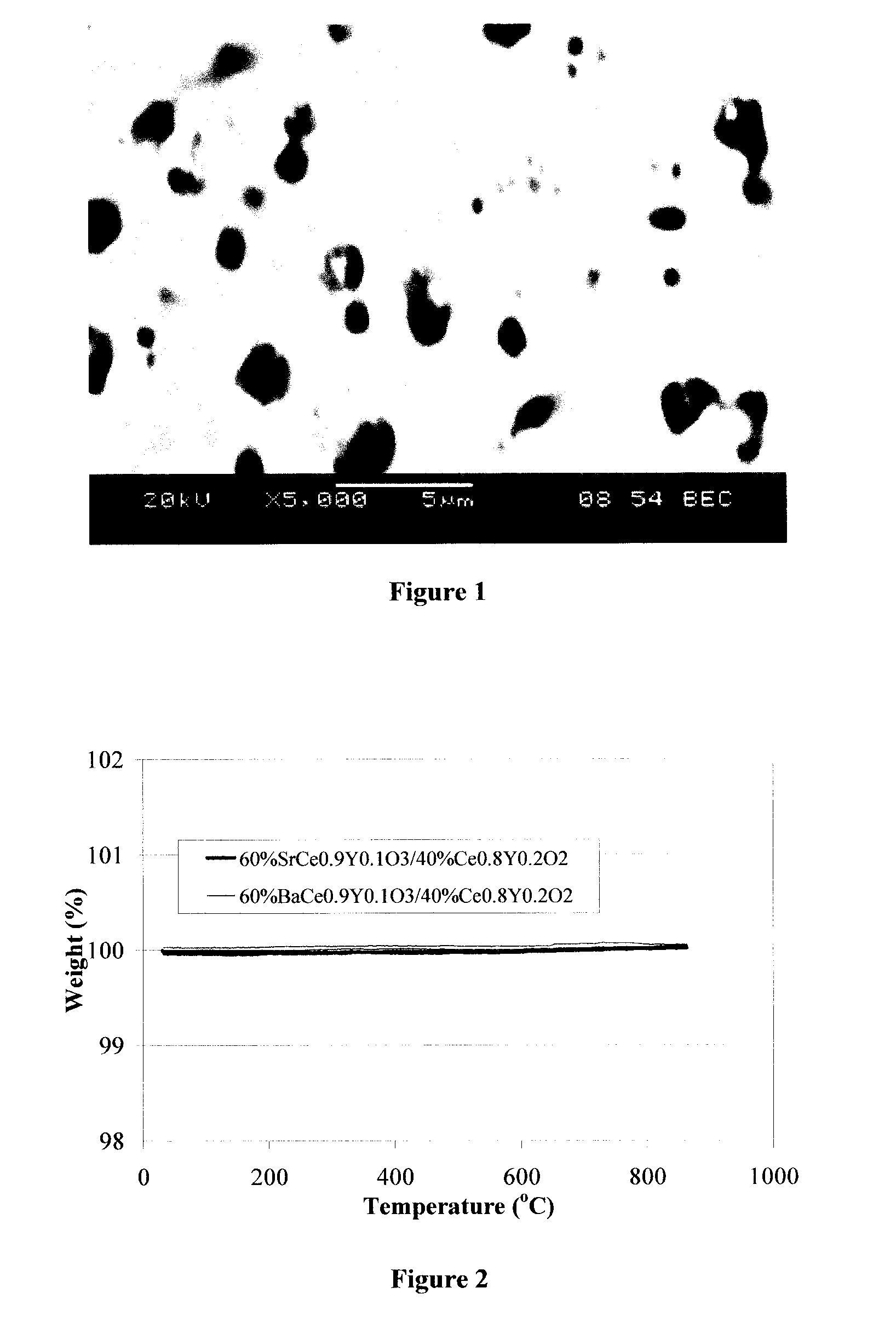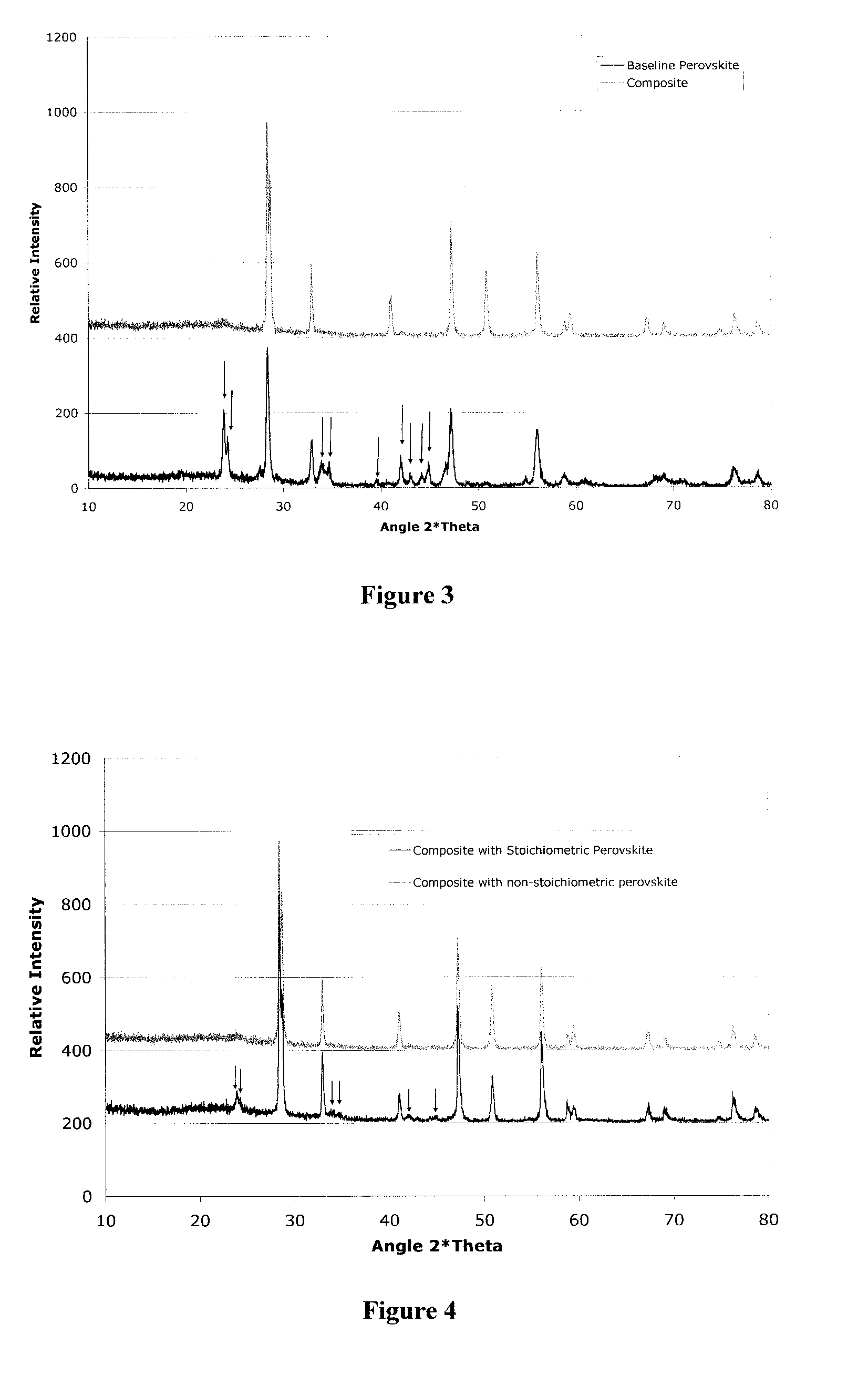Ceramic mixed protonic/electronic conducting membranes for hydrogen separation
a protonic/electronic conducting membrane and ceramic mixed technology, applied in the direction of membranes, non-metal conductors, separation processes, etc., can solve the problems of unsuitable materials for hsub>2 /sub>separation from raw syngas, premature failure of these membranes, and localized hot spots
- Summary
- Abstract
- Description
- Claims
- Application Information
AI Technical Summary
Benefits of technology
Problems solved by technology
Method used
Image
Examples
example 1
[0027] A stoichiometric pervoskite material was prepared by adding raw material oxide and carbonate powders (BaCO3, CeO2, Eu2O3) in stoichiometric amounts to form the pervoskite BaCe0.8Eu0.2O2.9. The powders were mixed for 30 minutes on a paint shaker with zirconia milling media in a 1 liter Nalgene bottle followed by ball milling for 24 hours. The well mixed powder was then calcined at 1400° C. to decompose the carbonate and react the powders together to form a single phase pervoskite material. The calcined powder was then ball milled for 72 hrs in acetone resulting in a fine powder with a 1-2 micron particle size with a surface area from 1.5-3 m2 / g.
[0028] The powder was screened through an 80 mesh sieve and then mixed with ceria doped europium that was fabricated by a similar process as the BaCe0.8Eu0.2O2.9 to form a 50 / 50 volume % mixture. The two powders were placed in a Nalgene container with milling media and acetone and then mixed vigorously on a paint shaker for 30 minutes....
example 2
[0030] Two different compositions of the two-phase mixed conducting ceramic material were fabricated as described in example 1. The two compositions formulated were (1) 50 vol % BaCe0.7Eu0.3O2.85+50 vol % Ce0.8Y0.2O2.9 and (2) 50 vol % BaCe0.8Eu0.2O2.9+50 vol % Ce0.8Y0.2O2.9. In order to demonstrate the stability of the two phase composite material, thermogravimetric analysis (TGA) in reducing environments containing H2O and CO2 was performed to observe any weight changes as a function of time. There was no measurable weight change during the TGA tests as shown in FIG. 2 indicating that the material was stable at these temperature and gas composition environments. FIG. 2 depicts thermogravimetric analysis data in syngas showing very good stability of perovskite / oxide composites in reducing environments containing CO, CO2 and H2O.
example 3
[0031] A non-stoichiometric pervoskite material was prepared by adding raw material oxide and carbonate powders (BaCO3, CeO2, Eu2O3) in non-stoichiometric amounts (Barium deficient) to form the pervoskite Ba0.92Ce0.8Eu0.2O2.82. The powders were mixed for 30 minutes on a paint shaker with zirconia milling media in a 1 liter Nalgene bottle followed by ball milling for 24 hours. The well mixed powder was then calcined at 1400° C. to decompose the carbonate and react the powders together to form a single phase pervoskite material. The calcined powder was then ball milled for 72 hrs in acetone resulting in a fine powder with a 1-2 micron particle size with a surface area from 1.5-3 m2 / g.
[0032] It is well known that conventional doped barium cerate compositions are unstable in oxidizing conditions in the presence of CO2 and H2O due to hydroxide and carbonate formation respectively. An experiment was performed to demonstrate that the materials in the present invention are more stable than...
PUM
| Property | Measurement | Unit |
|---|---|---|
| protonic conductivity | aaaaa | aaaaa |
| electronic conductivity | aaaaa | aaaaa |
| temperature | aaaaa | aaaaa |
Abstract
Description
Claims
Application Information
 Login to View More
Login to View More - R&D
- Intellectual Property
- Life Sciences
- Materials
- Tech Scout
- Unparalleled Data Quality
- Higher Quality Content
- 60% Fewer Hallucinations
Browse by: Latest US Patents, China's latest patents, Technical Efficacy Thesaurus, Application Domain, Technology Topic, Popular Technical Reports.
© 2025 PatSnap. All rights reserved.Legal|Privacy policy|Modern Slavery Act Transparency Statement|Sitemap|About US| Contact US: help@patsnap.com



